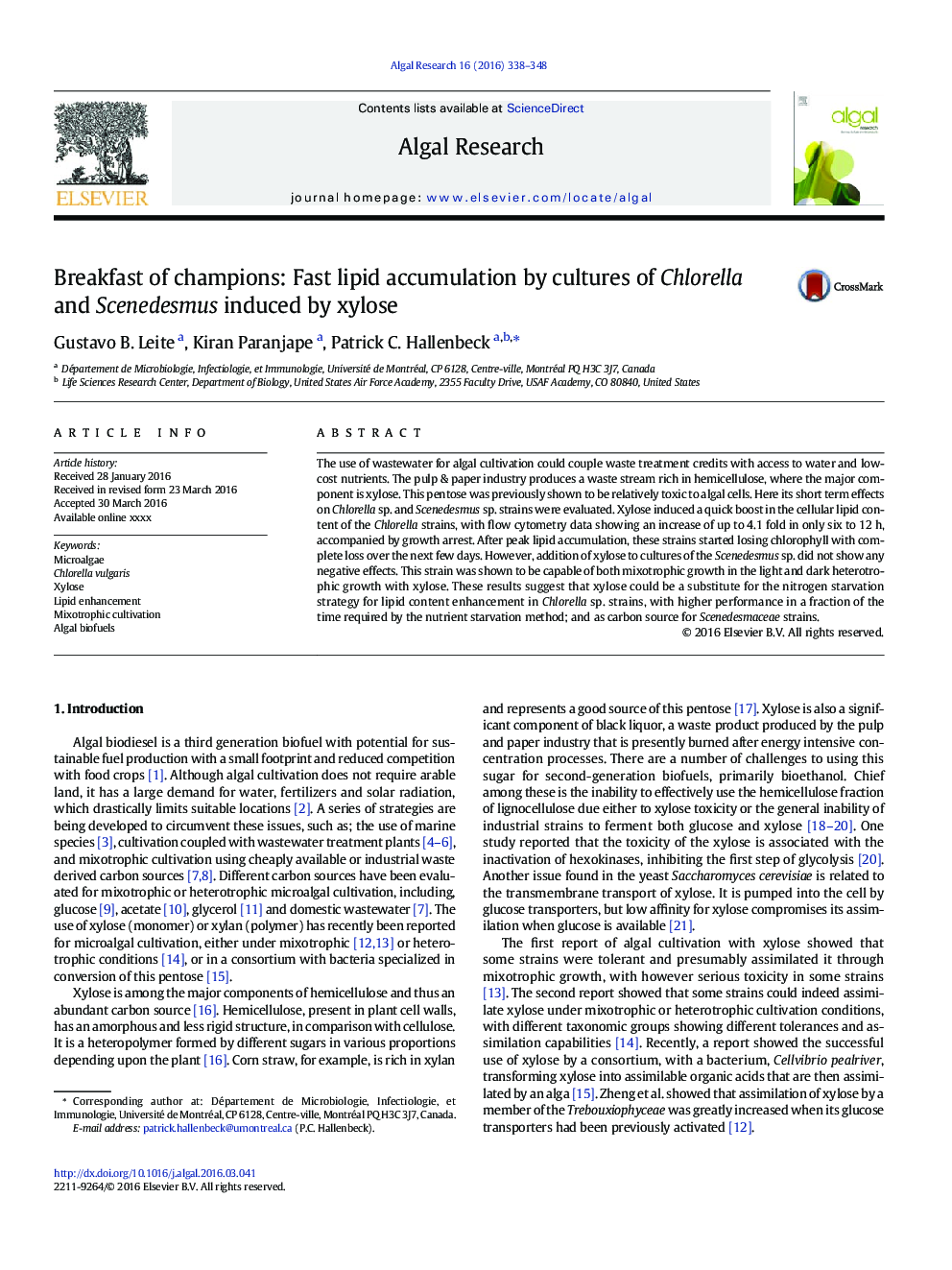| Article ID | Journal | Published Year | Pages | File Type |
|---|---|---|---|---|
| 8087018 | Algal Research | 2016 | 11 Pages |
Abstract
The use of wastewater for algal cultivation could couple waste treatment credits with access to water and low-cost nutrients. The pulp & paper industry produces a waste stream rich in hemicellulose, where the major component is xylose. This pentose was previously shown to be relatively toxic to algal cells. Here its short term effects on Chlorella sp. and Scenedesmus sp. strains were evaluated. Xylose induced a quick boost in the cellular lipid content of the Chlorella strains, with flow cytometry data showing an increase of up to 4.1 fold in only six to 12Â h, accompanied by growth arrest. After peak lipid accumulation, these strains started losing chlorophyll with complete loss over the next few days. However, addition of xylose to cultures of the Scenedesmus sp. did not show any negative effects. This strain was shown to be capable of both mixotrophic growth in the light and dark heterotrophic growth with xylose. These results suggest that xylose could be a substitute for the nitrogen starvation strategy for lipid content enhancement in Chlorella sp. strains, with higher performance in a fraction of the time required by the nutrient starvation method; and as carbon source for Scenedesmaceae strains.
Related Topics
Physical Sciences and Engineering
Energy
Renewable Energy, Sustainability and the Environment
Authors
Gustavo B. Leite, Kiran Paranjape, Patrick C. Hallenbeck,
